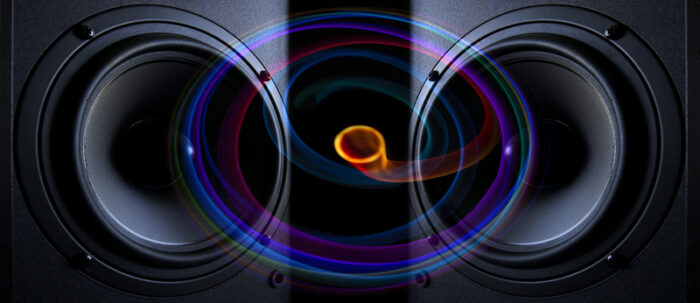Let's dance!
Even if you don't consider yourself a good dancer, there is little denying that music has a real effect on us, and will make even the most reluctant performer tap their toes and wiggle their hips.
This is because music—that combination of rhythm and melody—is something that we find irresistible. When we hear it, we start moving!
But will we move more to music that we can't hear?
On the surface, the answer seems obvious: No, of course not!
And yet, a new study out of McMaster University in Hamilton, Ontario is challenging that. Using ultra-low bass frequencies—ones that are near the very bottom or below the range of human hearing—researchers conducted experiments to see how people would react. They discovered that adding deep bass notes actually increased how much the people in the study would dance!
Good vibrations
Soundwaves move through air similarly to how waves move through water. (Getty Embed)
So how does this work? How can humans move to things that they cannot hear?
Maybe a better question is: What is sound?
Basically, a sound happens when a movement of energy causes a disturbance of a medium.
Think of how a wave travels through water after you drop a pebble in it. The impact of the tiny rock releases energy into the water, which travels out in all directions as a series of waves. In this case, the water is a medium. In everyday life, we hear sound as it travels through another medium: air.
Every single sound that you hear is the result of energy vibrating through air. You are hearing it disturb the air!
Does it hertz?
Of course, not every disturbance is something that we hear. Sounds travel through a medium as waveforms. These waveforms are measured in units known as hertz (Hz).
Humans hear sounds in a range of about 20 Hz (hertz) up to 20,000 Hz (or 20 kilohertz).
Some waveforms are made of very long, slowly repeating waveforms, or fewer hertz. These are lower pitched sounds. Meanwhile, other waveforms are full of very rapidly repeating, tiny waves, or many hertz. These are higher pitched sounds.
Let's conduct a little listening session to demonstrate.
This video runs through the entire spectrum of the average human's hearing. Even when listening through headphones, you might think no sound is happening at the start, but it will quickly become apparent that it is. As the hertz increase, the distance between the waves gets tighter and tighter. Check it out.
WARNING: These sounds can get a little intense, so listen at a low volume and stop if it gets to be too much. We're pretty sure that you'll get the idea even if you don't finish the whole video!
Can you feel it?
The range of sounds that humans can hear is actually quite narrow. (And depending on whether or not you had any animals present when you listened, especially cats and dogs, they may have reacted quite differently to the higher ranges of the video.)
But getting back to this study, the video's early, lower frequencies may have been something that you felt more than heard.
This is because these long, wide soundwaves of these ultra-low frequencies really move the air around them. And we feel them as pressure. Pressure on our ears, pressure on our bodies.
This phenomenon is what the experiment at McMaster was trying to understand better. How much frequencies that we really only feel add to our experience of music.
Low makes us go
DJs have often use low frequencies to get people moving. This experiment proves that they are on to something! (Getty Embed)
To test this, the study placed participants in a room and had them listen to some tunes. In addition to a 'normal' sound system, they added some VLF (very low frequency) speakers into the mix. After confirming that the participants couldn't hear anything through the VLF speakers on their own, they proceeded to play a bunch of music for the people.
From time to time, they turned the VLF speakers on for a period. Then turned them off. Then back on again. And off.
Afterwards, they analyzed what they saw.
The study showed that on average, the people moved nearly 12 percent more when the VLF speakers were turned on. The lower frequencies made the people move more.
In other words, they really responded to sounds that they couldn't hear!
Exactly why humans do this will require further experimenting. Is it something that we feel on our skin? Through our muscles? Does it vibrate the inner ear (or vestibular system, which affects our sense of balance)? Regardless, we would like to volunteer for further experiments.
Who doesn't want to dance for science?
 This new experiment looks at how we hear and feel sound. (ID 223084366 © Aliaksei Niadzelka | Dreamstime.com)
This new experiment looks at how we hear and feel sound. (ID 223084366 © Aliaksei Niadzelka | Dreamstime.com)










You were right about the cat part! My cats were chilling on the cat tower until the sound got higher and higher, and they bolted away!
My dog was sooo scared of the high pitched ones that she started barking! 😉